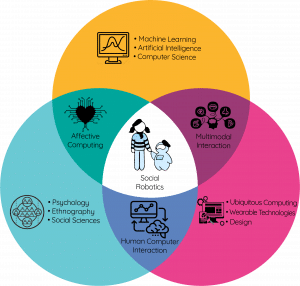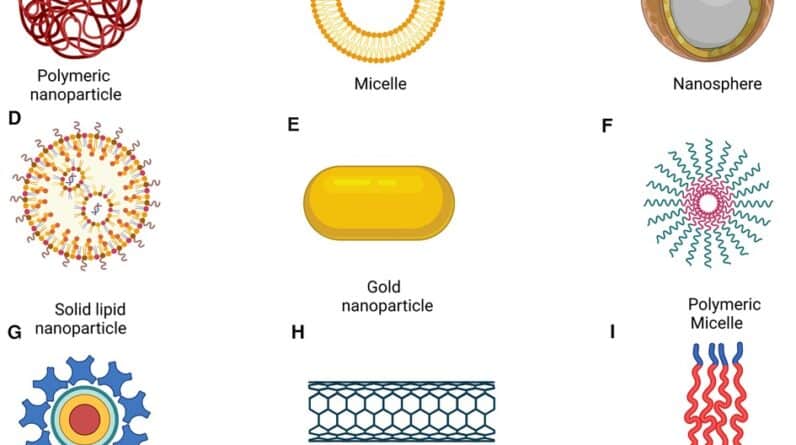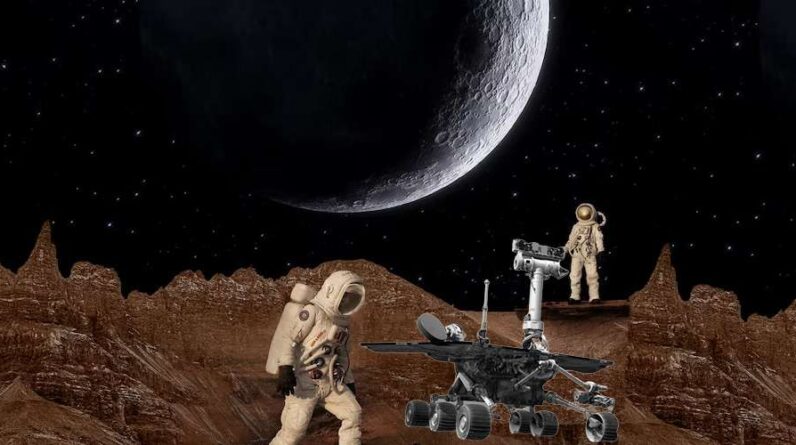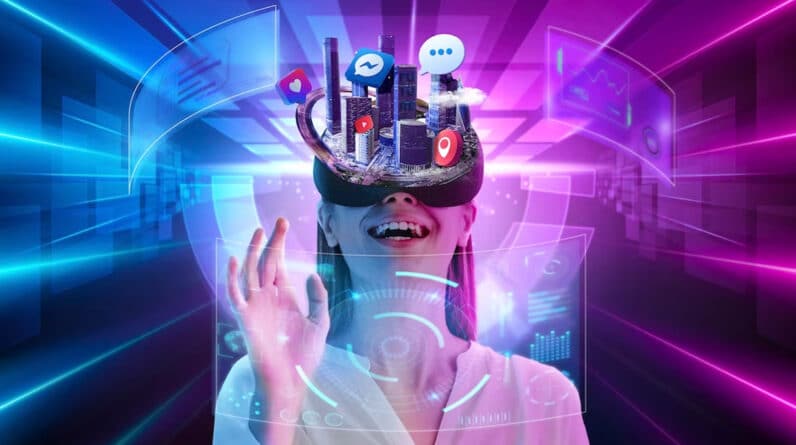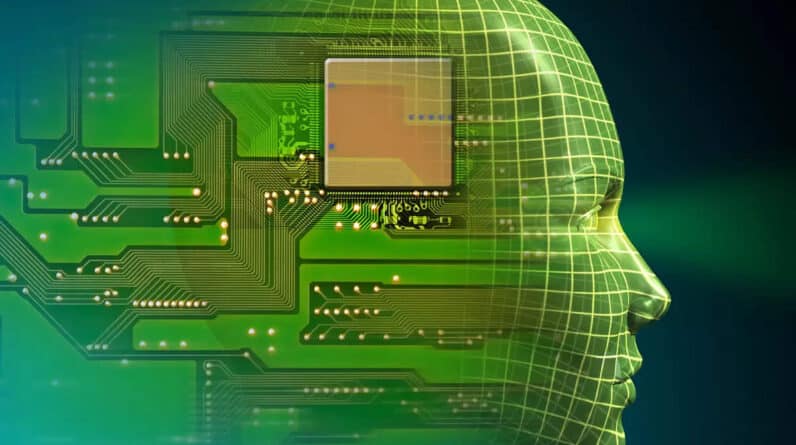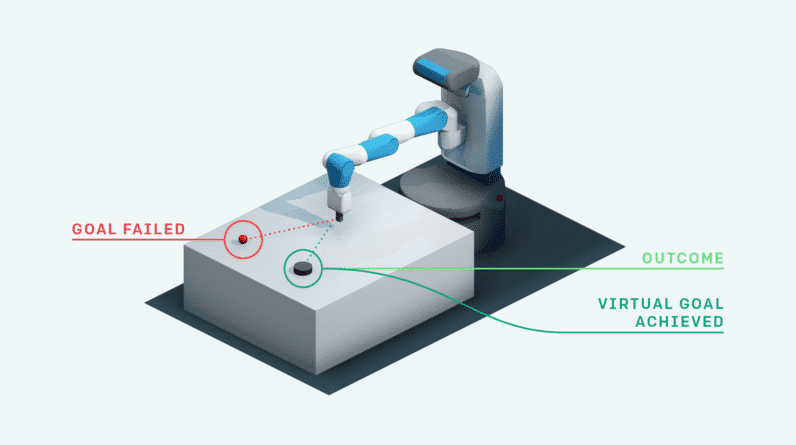Imagine a future where artificial intelligence (AI) collaborates with astronauts, helping us unravel the mysteries of the cosmos. In this article, we will explore the fascinating ways in which machine learning is transforming space exploration. From analyzing vast amounts of data to predicting celestial events, AI is guiding our journey to the stars, pushing the boundaries of human knowledge and opening up new possibilities in our quest to understand the universe. Get ready to embark on an exciting journey through the realm of AI in space.

AI Applications in Space Exploration
With the advancement of technology and the development of artificial intelligence (AI), our exploration of the cosmos has reached new heights. AI has proved to be a powerful tool in various aspects of space exploration, from satellite imagery analysis to space navigation and communication. In this article, we will delve into the different applications of AI in space exploration and how it is revolutionizing our understanding of the universe.
Machine Learning in Satellite Imagery Analysis
Satellites capture vast amounts of data through their high-resolution imagery. However, analyzing this data manually can be time-consuming and prone to errors. This is where machine learning algorithms come into play. By training AI models with vast datasets, scientists can utilize machine learning techniques to analyze satellite imagery more efficiently.
Machine learning algorithms can detect patterns, identify objects, and perform image classification with incredible accuracy. This enables researchers to study various phenomena such as changes in land cover, the tracking of wildfires, or the identification of potential sites for human settlement on other planets. By automating these tasks, AI helps save time and resources, allowing scientists to focus on more complex research questions.
AI for Autonomous Spacecraft
The vast distances of space and the complexity of missions demand autonomous spacecraft capable of making decisions on their own. AI plays a crucial role in enabling spacecraft to operate autonomously, reducing the need for constant human intervention.
AI-powered systems enable spacecraft to adapt to changing conditions and make decisions based on real-time data. For instance, AI algorithms can help spacecraft avoid obstacles, navigate complex orbital trajectories, and make efficient use of available resources. These capabilities not only increase mission success rates but also reduce the risks associated with human error.
AI in Robotic Missions
Robotic missions have become an integral part of space exploration, allowing us to explore celestial bodies that are inaccessible to humans. AI plays a vital role in these missions, enabling robots to perform complex tasks with precision and efficiency.
Through machine learning algorithms, robots can analyze their surroundings, recognize objects, and make decisions based on their observations. This allows them to collect and analyze samples, map unexplored terrains, and even perform repairs on spacecraft. AI-powered robots can adapt and learn from their experiences, improving their performance over time.
AI for Space Weather Forecasting
Space weather refers to the conditions in space that can affect the performance and safety of spacecraft. These conditions include solar flares, radiation exposure, and electromagnetic disturbances. AI has proven to be invaluable in predicting and mitigating the impact of space weather on space missions.
By analyzing historical data and real-time observations, AI algorithms can forecast space weather conditions with high accuracy. This information is crucial for mission planning, ensuring that spacecraft and astronauts are adequately protected against potential hazards. AI-powered space weather forecasting improves the safety and efficiency of space missions, enabling us to explore the cosmos with greater confidence.
Enhancing Astronomical Research
AI in Data Processing and Analysis
Astronomical research generates massive amounts of data that require extensive processing and analysis. AI algorithms, particularly deep learning models, have revolutionized the field of data processing, enabling researchers to extract valuable insights from vast datasets.
Machine learning techniques can analyze astronomical images, identify celestial objects, and classify them based on various characteristics. This allows astronomers to discover new celestial phenomena, study their properties, and gain a deeper understanding of the universe. AI accelerates data processing and analysis, enhancing our ability to uncover hidden secrets of the cosmos.
Machine Learning for Exoplanet Discovery
The discovery of exoplanets – planets outside our solar system – has been one of the most significant breakthroughs in astronomy. Machine learning has played a crucial role in identifying and characterizing exoplanets from vast datasets obtained by telescopes.
By training AI models with known exoplanets and other celestial objects, scientists can develop algorithms that can automatically detect exoplanet candidates. Machine learning algorithms can identify subtle patterns in light curves and spectroscopic data, indicating the presence of exoplanets. This automated detection process has greatly increased the efficiency of exoplanet discovery, leading to the detection of thousands of new exoplanets in recent years.
AI in Gravitational Wave Detection
Gravitational waves are ripples in the fabric of spacetime caused by extreme astronomical events, such as the collision of black holes. Detecting gravitational waves allows us to observe events that are otherwise invisible. AI has emerged as a key tool in the detection and analysis of gravitational waves.
AI algorithms can analyze the data obtained from gravitational wave detectors, such as the Laser Interferometer Gravitational-Wave Observatory (LIGO). Machine learning models can extract subtle signals from the detector noise, enabling the identification of gravitational wave events. This has led to groundbreaking discoveries in astrophysics, confirming the existence of black holes and unveiling the secrets of the universe’s most violent events.
AI in Cosmological Simulations
Cosmological simulations help us understand the formation and evolution of the universe. By modeling the interaction of various astrophysical processes, scientists can simulate the evolution of galaxies, the distribution of dark matter, and the large-scale structure of the universe. AI is transforming the field of cosmological simulations, enabling more accurate and detailed simulations.
Machine learning algorithms can learn from observed data and physics-based simulations to improve the fidelity and efficiency of cosmological models. AI-powered simulations can provide valuable insights into the fundamental processes that shape the universe, helping astronomers refine their theories and understand the nature of dark matter and dark energy.

Improving Space Navigation and Communication
AI for Satellite Navigation
Accurate navigation is critical for space missions to reach their intended destinations. AI-based satellite navigation systems enhance the accuracy and reliability of spacecraft navigation, even in challenging conditions.
AI algorithms can process data from multiple sensors, such as GPS receivers and inertial measurement units, to estimate the spacecraft’s position, velocity, and orientation. These algorithms can compensate for measurement errors, predict future trajectory changes, and autonomously make navigation decisions. AI-powered satellite navigation ensures precise and reliable spacecraft movement, enabling missions to reach their targets with high precision.
Machine Learning for Deep Space Communication
Deep space communication involves transmitting and receiving signals to and from spacecraft in distant parts of the solar system. AI has the potential to revolutionize deep space communication by improving the efficiency and reliability of data transmission.
Machine learning algorithms can analyze historical communication data, including signal quality and noise characteristics, to optimize signal processing and decoding algorithms. AI models can adapt to changing communication conditions, minimizing the impact of signal degradation and maximizing data transmission rates. With AI-powered deep space communication, we can establish more robust connections with spacecraft, enabling faster and more reliable data transfer.
AI in Orbit Determination
Accurate orbit determination is vital for maintaining the trajectories of spacecraft and satellites. AI algorithms can process tracking data obtained from ground-based or space-based observation systems to estimate and predict the orbits of celestial objects.
Machine learning models can analyze historical tracking data to identify patterns and anomalies in orbit behavior. This enables the prediction of future orbits with higher precision and validates the accuracy of existing orbital models. With AI-powered orbit determination, space agencies can ensure the safe and efficient operation of their spacecraft and satellites.
AI for Space Debris Tracking
The accumulation of space debris poses a significant risk to space missions and human spaceflight. AI can help in tracking and monitoring space debris, enabling accurate predictions of potential collisions.
AI algorithms can analyze data from space surveillance sensors and track the trajectories of space debris objects. These algorithms can classify and catalog debris, estimate their future paths, and provide early warnings of potential collisions. By employing AI-based space debris tracking systems, space agencies can mitigate the risks posed by debris and safeguard the integrity of space missions.
AI in Controlling Space Systems
Machine Learning for Spacecraft Control
Spacecraft control systems ensure the proper functioning and maneuverability of spacecraft in various mission scenarios. AI algorithms can optimize control systems, improving their responsiveness and efficiency.
By using historical mission data and simulation models, machine learning algorithms can learn the dynamics and constraints of spacecraft. This allows AI models to make predictive decisions, optimize control parameters, and adapt to changing mission requirements. AI-powered spacecraft control systems enhance mission performance and increase the reliability of space missions.
AI in Autonomous Rovers
Autonomous rovers play a crucial role in exploring the surfaces of other planets and moons. AI enables rovers to navigate unknown terrains, avoid obstacles, and make intelligent decisions without direct human control.
Machine learning algorithms can process imagery and sensor data captured by rovers to identify hazards, analyze geological features, and select optimal paths. AI-powered rovers can learn from their experiences, improving their navigation and scientific exploration capabilities over time. With the help of AI, rovers can maximize their scientific output and contribute to our understanding of other celestial bodies.
AI in Extraterrestrial Sample Analysis
Collecting samples from other celestial bodies, such as the Moon or Mars, is a significant milestone in space exploration. AI can aid in the analysis of these extraterrestrial samples, enabling scientists to extract valuable information about the composition and history of other planets.
Machine learning algorithms can analyze microscopic images, perform spectroscopic analysis, and identify important compounds or minerals within the samples. AI-powered sample analysis systems can classify and characterize the samples, providing insights into their geological origin and potential habitability. AI streamlines the analysis process, accelerating the understanding of extraterrestrial samples and laying the foundation for future exploration missions.
AI for Spacesuit Design
Spacesuits are essential for protecting astronauts during spacewalks and extravehicular activities. AI can contribute to the design and development of more advanced and comfortable spacesuits.
Machine learning algorithms can analyze physiological data obtained from astronauts during spacewalks to monitor their comfort levels and detect potential health risks. AI models can optimize spacesuit design parameters, such as mobility, thermal insulation, and life support systems, to enhance performance and minimize health risks. AI-powered spacesuit design ensures the safety and well-being of astronauts during their missions in the harsh conditions of space.

Safeguarding Astronauts’ Health
AI in Medical Diagnostics
Ensuring the health and well-being of astronauts during space missions is of utmost importance. AI can assist in medical diagnostics and monitoring systems, enabling timely detection and treatment of potential health issues.
Machine learning algorithms can analyze biomedical data, such as vital signs, blood tests, or medical imaging, to identify patterns indicative of specific health conditions. AI-powered diagnostic systems can detect anomalies, monitor astronaut well-being, and provide early warnings for potential health risks. With the help of AI, astronauts can receive timely medical support, enhancing their safety and enabling longer-duration space missions.
Machine Learning for Monitoring Systems
Monitoring the performance and status of space systems is critical for maintaining their reliability. AI can assist in analyzing telemetry and sensor data, enabling real-time monitoring and predictive maintenance.
Machine learning algorithms can analyze time-series data obtained from various spacecraft systems, such as propulsion, power, and life support systems. By identifying patterns and anomalies, AI models can detect potential failures or performance degradation before they occur. This proactive approach to system monitoring enables timely interventions and reduces the risk of mission interruption.
AI in Predictive Maintenance
Space missions involve complex and delicate systems that require regular maintenance to ensure optimal performance. AI can facilitate predictive maintenance by analyzing data from sensors and historical maintenance records.
Machine learning algorithms can analyze sensor data to detect wear and tear, predict component failures, and optimize maintenance schedules. This proactive approach allows for timely interventions, preventing critical failures and minimizing downtime. AI-powered predictive maintenance not only increases the reliability of space systems but also reduces the costs associated with unscheduled repairs.
AI for Mental Health Support
The psychological well-being of astronauts during long-duration space missions is crucial for mission success. AI can contribute to mental health support systems by providing personalized assistance and monitoring.
Machine learning algorithms can analyze physiological and behavioral data to detect signs of stress, anxiety, or depression. AI-powered mental health support systems can provide tailored interventions, such as virtual counseling or stress management techniques, to support astronauts during their missions. By incorporating AI into mental health support, space agencies can prioritize the well-being of astronauts and ensure optimal mission performance.
AI’s Role in Space Mission Planning
Machine Learning for Mission Risk Assessment
Space missions involve inherent risks, and accurate risk assessment is vital for mission success. AI can assist in assessing and mitigating various risks associated with space missions.
Machine learning algorithms can analyze historical mission data, such as launch failure rates, orbital debris risks, or instrument malfunctions, to estimate mission-specific risks. AI-powered risk assessment systems can identify potential failure points, prioritize mitigation strategies, and optimize mission planning to enhance safety and minimize potential setbacks. AI-based risk assessment contributes to informed decision-making and ensures the successful execution of space missions.
AI in Resource Allocation
Space missions require careful management of resources, including fuel, power, and consumables. AI can optimize resource allocation by analyzing mission objectives, constraints, and available resources.
Machine learning algorithms can model resource utilization patterns and predict future requirements based on mission scenarios. AI-powered resource allocation systems can optimize the distribution of resources, ensuring their efficient and sustainable use throughout the mission. By using AI for resource allocation, space agencies can maximize mission productivity and extend the duration of space missions.
AI in Task Scheduling
Space missions involve a multitude of tasks that need to be scheduled and coordinated efficiently. AI can assist in task scheduling by considering mission objectives, constraints, and dependencies.
Machine learning algorithms can analyze mission timelines, task requirements, and resource availability to develop optimal schedules. AI-powered task scheduling systems can adapt to changing conditions, prioritize critical tasks, and optimize mission efficiency. By using AI for task scheduling, space agencies can ensure the smooth execution of mission plans, reducing delays and maximizing productivity.
AI for Mission Redundancy
Ensuring the redundancy and fault tolerance of critical systems is crucial for mission reliability. AI can contribute to mission redundancy by analyzing system architectures, failure modes, and available backup resources.
Machine learning algorithms can assess the reliability and performance of mission systems, identifying potential single points of failure and bottlenecks. AI-powered redundancy analysis systems can propose backup solutions, alternative mission plans, or system reconfigurations to increase mission resilience. By employing AI for mission redundancy, space agencies can minimize the risk of mission failure and maximize the chances of successful mission outcomes.

Addressing Space Exploration Challenges
AI for Space Radiation Protection
Space radiation poses significant risks to astronauts’ health during long-duration space missions. AI can contribute to space radiation protection by predicting and mitigating radiation exposure.
Machine learning algorithms can analyze historical radiation data from previous missions, predict radiation levels, and assess their potential impact on astronaut health. AI-powered radiation protection systems can optimize shielding design, schedule astronaut activities, and provide early warnings for high radiation events. With the help of AI, space agencies can ensure the safety and well-being of astronauts during their journeys through space.
Machine Learning in Extraterrestrial Agriculture
Sustainable food production is crucial for future long-duration space missions and the colonization of other celestial bodies. AI can enhance extraterrestrial agriculture by optimizing cultivation techniques and resource utilization.
Machine learning algorithms can analyze data from controlled environment agriculture experiments and simulate the growth of crops under different conditions. AI models can optimize factors such as light, temperature, humidity, and nutrient availability to maximize crop yield and minimize resource consumption. AI-powered extraterrestrial agriculture contributes to long-term space exploration by ensuring sustainable food production for astronauts and future settlers.
AI in Lunar and Martian Habitat Design
Designing habitats for future lunar and Martian missions requires precision and consideration of various factors. AI can assist in habitat design by analyzing mission requirements, environmental conditions, and architectural constraints.
Machine learning algorithms can optimize habitat designs based on factors such as structural integrity, thermal insulation, radiation protection, and habitability. AI-powered habitat design systems can propose innovative solutions, optimize material usage, and ensure the efficient utilization of available space. AI-enhanced habitat design enables the creation of safe and comfortable living environments for future space explorers.
AI for Sample Return Missions
Sample return missions involve collecting valuable samples from other celestial bodies and safely returning them to Earth for detailed analysis. AI can optimize sample return missions by ensuring precise sample collection and spacecraft trajectory planning.
Machine learning algorithms can analyze mission constraints, navigation data, and sample collection requirements to optimize sample return trajectories. AI models can consider various factors, such as fuel consumption, orbital dynamics, and mission objectives, to propose optimal return paths and enhance mission success rates. AI-powered sample return missions enable the retrieval of valuable scientific data and pave the way for future exploration endeavors.
AI’s Contribution to Space Telescopes
Machine Learning in Image Reconstruction
Space telescopes capture vast amounts of imagery from distant celestial objects. However, capturing high-resolution images can be affected by various factors, such as atmospheric distortion or optical imperfections. AI can assist in image reconstruction, enhancing the quality and resolution of astronomical images.
Machine learning algorithms can analyze image data, identify distortions, and reconstruct images with higher clarity and sharpness. AI-powered image reconstruction ensures the extraction of detailed information from astronomical images, improving our understanding of celestial objects and phenomena. By leveraging AI in image reconstruction, astronomers can unveil hidden details that were previously obscured.
AI for Anomaly Detection
Space telescopes continuously monitor the sky for celestial events and phenomena. AI can aid in anomaly detection by analyzing large volumes of data and identifying unexpected phenomena.
Machine learning algorithms can process astronomical data streams, detect deviations from expected patterns, and classify anomalous events. AI-powered anomaly detection systems can flag unique and rare astronomical events, such as supernovae or gamma-ray bursts, enabling follow-up observations and intensive studies. AI-enhanced anomaly detection helps astronomers uncover rare and extraordinary phenomena, expanding our knowledge of the universe.
AI in Telescopic Survey Planning
Telescopic surveys aim to systematically observe large portions of the sky to identify and catalog celestial objects. AI can optimize telescopic survey planning by considering various factors, such as observation time, sky conditions, and survey priorities.
Machine learning algorithms can analyze observational data, historical surveys, and scientific objectives to develop intelligent survey planning strategies. AI-powered telescopic survey planning systems can identify optimal observation targets, allocate resources efficiently, and ensure comprehensive sky coverage. By utilizing AI in survey planning, astronomers can maximize the scientific output of telescopic observations and explore uncharted areas of the cosmos.
AI for Telescope Instrument Control
Space telescopes often have multiple instruments with different observation modes and sensitivities. AI can assist in telescope instrument control, allowing for efficient and automated operation of these instruments.
Machine learning algorithms can analyze observational data, instrument characteristics, and scientific goals to optimize instrument configurations and observation settings. AI-powered instrument control systems can adapt to changing observations, optimize data acquisition parameters, and maximize the utilization of telescope resources. By employing AI for telescope instrument control, astronomers can streamline their operations, increasing observation efficiency and scientific output.

AI in Interstellar Travel
Machine Learning for Interstellar Navigation
Interstellar travel, the exploration of other star systems, is one of the ultimate goals of space exploration. AI can aid in interstellar navigation by analyzing complex astrodynamics and optimizing spacecraft trajectories.
Machine learning algorithms can model the gravitational forces of stars and planets, predict their positions over long periods, and plan interstellar trajectories. AI-powered interstellar navigation systems can optimize trajectory choices, consider fuel efficiency, and ensure precise arrival times. AI’s contribution to interstellar navigation paves the way for humanity’s future voyages beyond our solar system.
AI in Long-Term Spacecraft Sustainability
Long-duration space missions require efficient resource management and sustainability. AI can contribute to the sustainability of spacecraft systems by optimizing resource utilization and guiding maintenance decisions.
Machine learning algorithms can analyze mission parameters, resource availability, and consumption patterns to develop sustainable spacecraft operation strategies. AI-powered sustainability systems can optimize power generation, waste management, and life support systems, reducing the dependence on external resupply. By integrating AI into spacecraft sustainability, space agencies can extend the duration of missions and lay the foundation for interstellar travel.
AI for Energy Management in Deep Space
Deep space missions often operate with limited energy resources, such as solar power or nuclear energy. AI can optimize energy management in deep space, ensuring efficient utilization of available power.
Machine learning algorithms can analyze power generation and consumption patterns to predict energy requirements and optimize energy storage and distribution. AI-powered energy management systems can adapt to changing mission conditions, prioritize critical systems, and maximize energy efficiency. By employing AI for energy management, space agencies can extend the operational lifetime of deep space missions and explore far-flung corners of the universe.
AI in Crew Selection for Interstellar Missions
Interstellar missions require carefully selected and trained crews capable of withstanding the challenges of long-duration space travel. AI can contribute to crew selection by analyzing physiological, psychological, and performance data.
Machine learning algorithms can identify characteristics and traits that correlate with successful long-duration space missions, such as adaptability, resilience, and teamwork skills. AI-powered crew selection systems can consider multiple factors, predict crew compatibility, and optimize crew composition for interstellar missions. By utilizing AI in crew selection, space agencies can ensure the physical and mental well-being of astronauts during extended journeys to distant star systems.
AI’s Future Impact on Space Exploration
Machine Learning and Next-Generation Telescopes
Next-generation telescopes, such as the James Webb Space Telescope (JWST) and the Nancy Grace Roman Space Telescope, promise unprecedented capabilities and observational power. AI will play a crucial role in maximizing the scientific output of these telescopes.
Machine learning algorithms can help optimize observing strategies, detect rare celestial events, and analyze the vast amounts of data generated by next-generation telescopes. AI-powered data processing and analysis will enable astronomers to discover new phenomena, detect distant galaxies, and gain deeper insights into the nature of the universe. The synergy between AI and next-generation telescopes will revolutionize our understanding of the cosmos.
AI in Human-Machine Collaboration
As space missions become more complex and demanding, the collaboration between humans and AI becomes increasingly crucial. AI can assist astronauts in decision-making, monitor spacecraft systems, and provide critical information in real-time.
Machine learning algorithms can analyze vast amounts of data, predict potential issues, and recommend appropriate actions for astronauts. AI-powered human-machine collaboration systems can facilitate efficient communication, remote medical support, and enhance situational awareness. By harnessing the power of AI in human-machine collaboration, space agencies can ensure the success and safety of space missions.
AI’s Influence on Space Policy
The use of AI in space exploration raises important policy and ethical considerations. As AI technologies become more prominent in the space industry, clear guidelines and regulations need to be established to ensure responsible and ethical use.
Space policies need to address issues such as data privacy, algorithm transparency, and accountability in AI-assisted space missions. International collaboration and coordination will be crucial in shaping the future of AI in space exploration and establishing a framework that balances innovation with ethical considerations. The responsible use of AI in space policy will pave the way for safe, sustainable, and inclusive exploration of the cosmos.
AI Development for Extraterrestrial Intelligence
The search for extraterrestrial intelligence (SETI) has been a longstanding endeavor in space exploration. AI can contribute to the analysis of vast datasets obtained in the search for signs of intelligent life beyond Earth.
Machine learning algorithms can analyze radio signals, optical data, or other forms of electromagnetic radiation, searching for patterns indicative of artificial origin. AI-powered SETI systems can process large volumes of data, detect potential signals, and distinguish between natural and artificial sources. By applying AI to the search for extraterrestrial intelligence, scientists can accelerate the discovery of potential interstellar communications and address the age-old question of whether we are alone in the universe.
In conclusion, AI has emerged as a transformative force in space exploration, revolutionizing our understanding of the cosmos. From analyzing satellite imagery to enhancing astronomical research, improving space navigation, controlling space systems, safeguarding astronaut health, and guiding space mission planning, AI has become an indispensable tool in the quest to unravel the mysteries of the universe. As AI technologies continue to evolve, their impact on space exploration is set to grow, promising new discoveries and pushing the boundaries of human knowledge beyond the confines of our planet.

